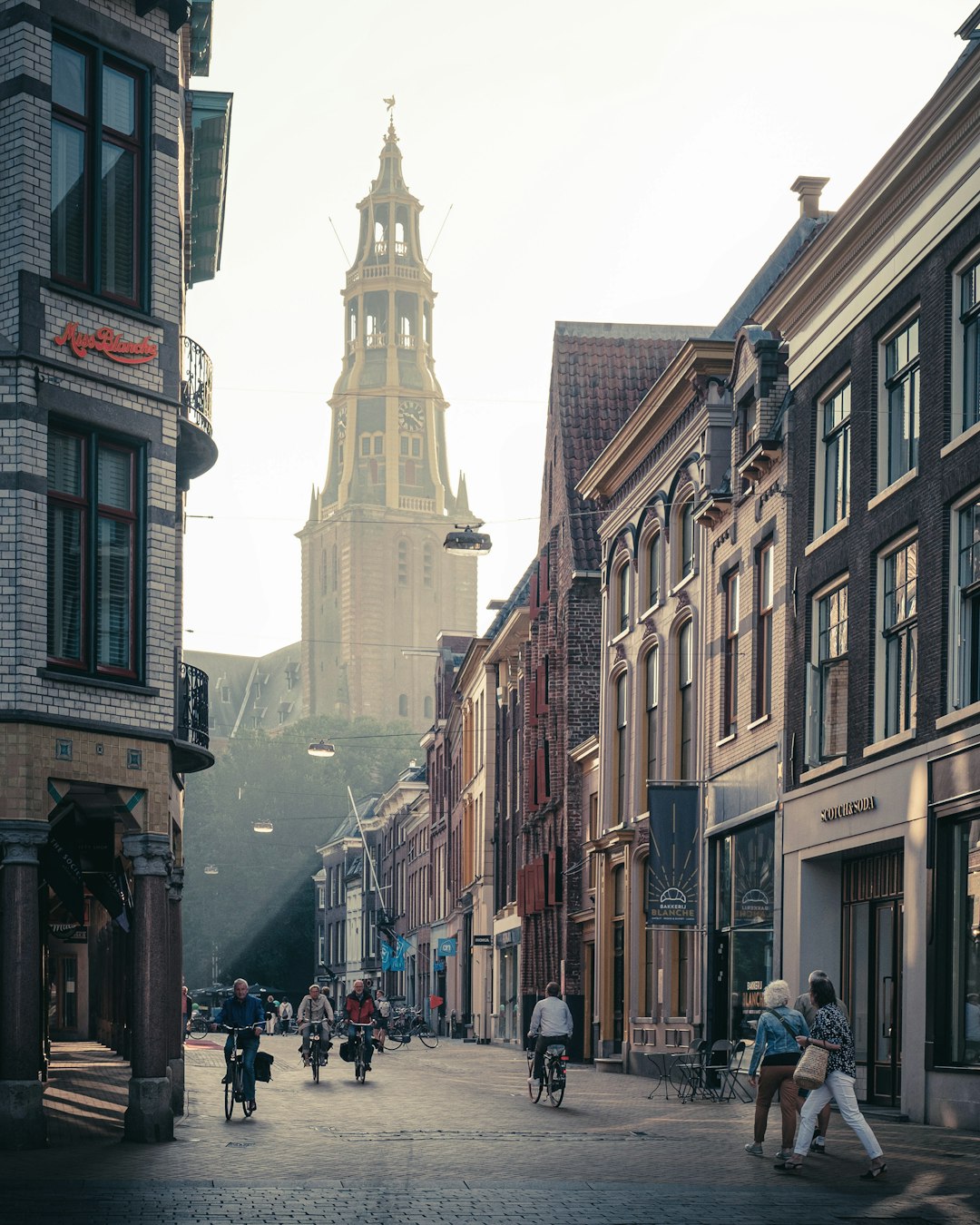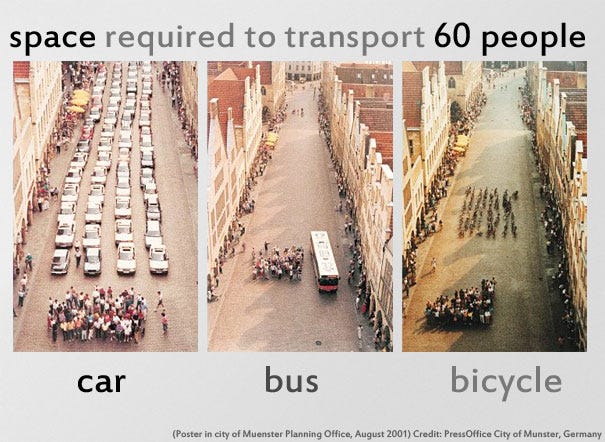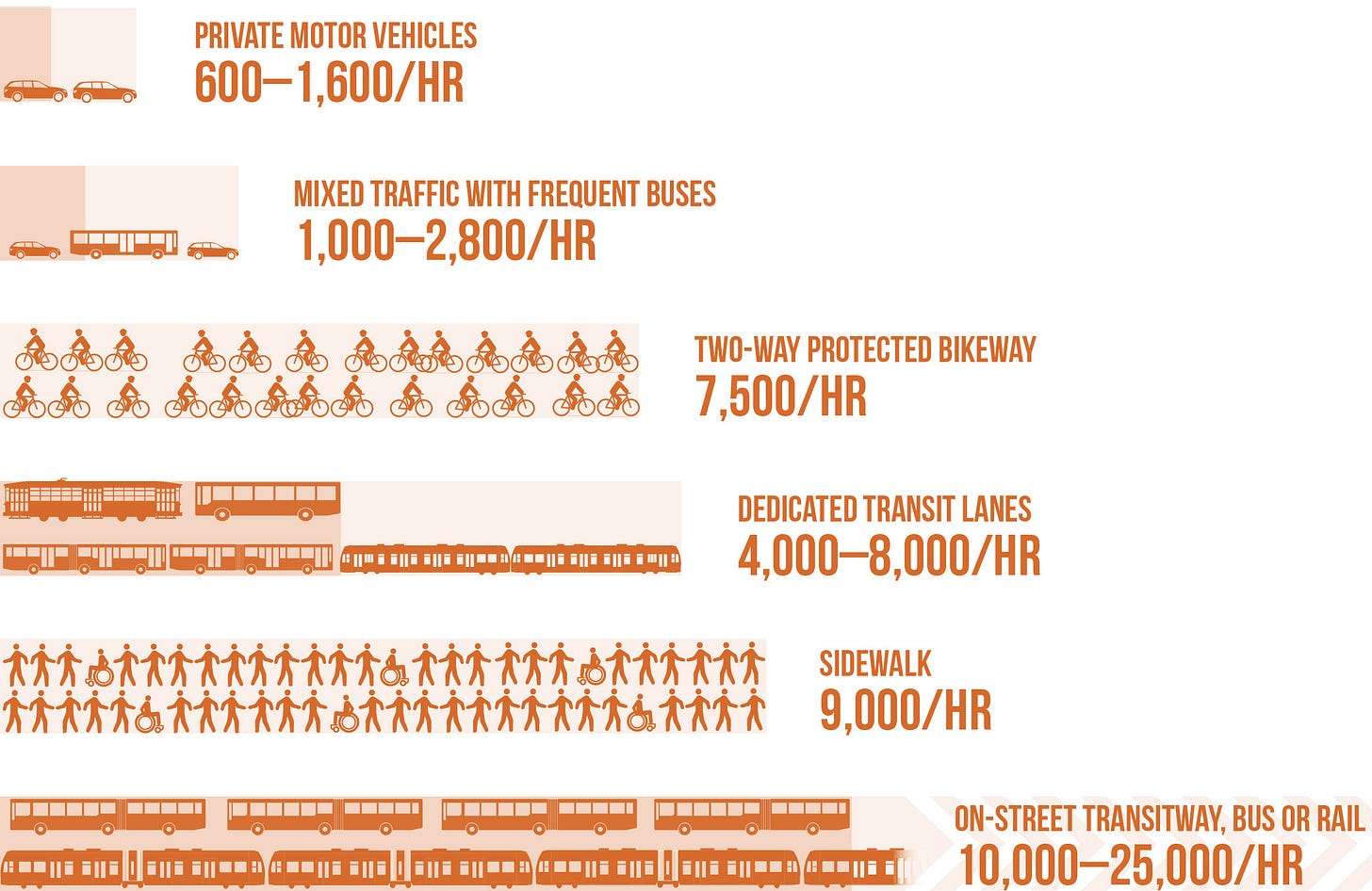The two tweets below seem to be saying opposite things, but both of them are correct:



Could it be, just maybe, that a tool that works really well for one context works really poorly in another?
After all, we wouldn’t ever expect to successfully paint a house using a tiny liner paint brush:

The misunderstanding about cars comes from missing the fact that transport is always a function of scale. Two very important scales to consider for transport are:
Intercity: Existing or traveling between different cities
Intracity: Existing or traveling within a particular city
Cars work very well as tools for intercity transport in the U.S. They’re relatively fast, flexible (you can go right to your destination), and for the distance covered fairly cheap to operate compared to a plane or train.
Cars work terribly as tools for intracity transport. The average intracity travel speed is not much faster than biking because of traffic, they take up massive amounts of space, use an incredibly large amount of energy (most of which is wasted), kill lots of people, and do indeed “dissolve the living tissue of the city”.
This is the main idea: Tools that work very well at one scale work very poorly at a different scale.
Do dentists use the same drill on your cavity that they do when building a cabinet at home?
Both are technically fulfilling the same job - drill a hole in a hard surface - yet because the scale is different the form of the tool must be different as well.
It is just as foolish to assume intracity transport should prioritize only cars as it is to assume dentists are equally well off using a 20v DeWalt power drill in place of a specialized dental drill. It’s the wrong tool for the job.
The Solution
Of course, 20th century cities have largely grown around the automobile as the primary means of both intercity and intracity transport.
Today this makes a lot of people very angry and is generally regarded as a bad move. Once you reduce a city’s density to the level where widespread automobile use is feasible, you have eliminated the option to have any other form of transport.
Automotive infrastructure is a kind of lowest common denominator. You can technically do everything with this form of infrastructure, but none of it is very good.
The way out of this dilemma is to 1. Recognize that there are two functionally very different scales of urban transport (intercity and intracity) and 2. Plan for each at the appropriate level.
Instead of centering intracity transport (within a city) around the automobile, it should be centered around the electric bike.
Ebike:
~50% of avg city speed of car with 1/10 the storage space
5-8x throughput of car-only travel lane
~5% the energy use of a car
None of the fatalities
3% of the capital cost of a car
<10% of the annual operating cost of a car
Natco.org
A city whose population commutes primarily by electric bike will accomplish the same or more as one whose population entirely commutes by car, but will use far less energy, spend dramatically less money on transportation, use their urban land much more efficiently, have a much quieter and pleasant urban environment, and kill fewer people.
Overall this results in a much more compelling place to live - a more compelling product. Not just because of the advantages above, but because qualitatively it can look very different. It can look more like this:

Instead of this:
New York Times
News flash: the first image is objectively superior as an environment for human life.
But What About When Water Falls from the Sky?
This is a good point.
In the Netherlands, a complaint that you can’t ride your bike in the rain would be quickly rebuffed with the phrase “Jij bent niet van suiker gemaakt” (“You’re not made of sugar”)
This is in a country where it rains 130 days out of the year!
But I admit that the United States is a more…comfort-loving group.
I do argue, however, that there is a solution to this that does not involve 4,000 pound steel boxes. It can be solved by much more modest means. I present the humble electric tuktuk:
Let’s see how these stack up against cars:
1/3 of the storage space
50-100% of the average intracity travel speed of cars depending on the model and power
A fraction of the energy use
<10% of the capital cost of a car
<20% the annual operating cost of a car
Far fewer fatalities (maybe none? anyone have data on tuktuk crashes?)
The important feature of these two forms of intracity transport are that they require dramatically less space than the automobile, while accomplishing the same job. Doing more with less is especially important in cities because urban land can be insanely valuable.
Nature holds the idea of parsimony - do the most with the least - as a holy principle. I think it’s about time the human race got on board with this idea: If you can accomplish the same ends using more efficient means, you should do so.
Further, transportation continues to eat up a huge proportion of Americans’ household budgets. Every dollar spent commuting an extra mile is a dollar than can’t be spent on food, housing or investment.
Worse, as people move farther away from cities to find cheaper land and cheaper housing, their transport cost goes up. If you want to live somewhere you don’t have to drive everywhere, you will pay an arm and a leg in housing cost.
It doesn’t have to be this way, but a solution can only be implemented through a ground-up Startup City. Small tweaks to existing cities simply won’t cut it. Once you’ve planned for auto-dependent sprawl, you can’t go back to relatively dense, beautiful places.







Excellent article. A forgotten urbanist called Doxiadis had a whole urban theory called “Ekistics”, one core aspect being the different types of scale one must cater to in the urban realm. He had a wonderful graph but can’t find it right now, will send dm once I do
Thank you Joel for these fresh thoughts. They seem that simple you don't onderstand they are not yet realized since a long time. It's good to promote the idea as a plan, and to go on thinking intelligent about the real problems. I really like the promotion of e-bike. In our regio the villages around Eindhoven are working on plans to realize bikeroads from the villages to the work places in Eindhoven as ASML and the other growing businesses of Eindhoven Airport. In Weebosch quite a lot of people already takes the bikeroad via Eersel to ASML. ASML promotes it too. They understand it's healthy for the workers, for their physical wellbeing as well as for their mental fitness.
Best wishes for you and Sophie..
Jos
Jos van den Putte